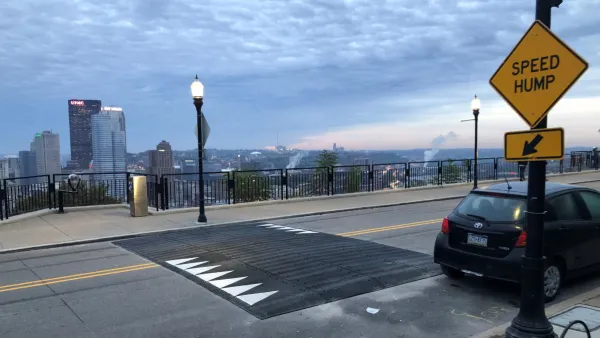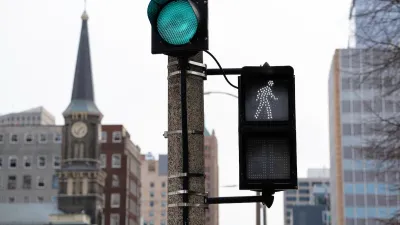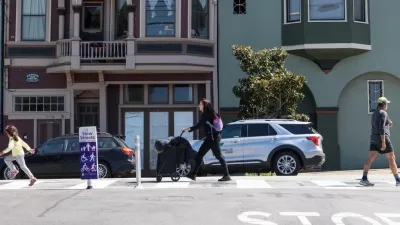Safety improvements at major intersections led to a 22 percent reduction in deaths and severe injuries and saved the city over $28 million.

Austin’s Vision Zero initiative is saving lives, according to a city report, with fatalities and serious injuries down by 22 percent at major intersections that received safety improvements, reports Haley McLeod in Community Impact.
The city made improvements at 27 major intersections since 2016, adding protective arrows and flashing lights for left turns, increasing crosswalk visibility, adding bicycle detection and signage, adjusting clearance time for red and yellow lights, and adding flashing warning signals.
McLeod notes that there is still work to be done. “The average of fatal or serious crashes is down from previous years, but there were eight intersections that saw an increase.” At one intersection where drivers tend to run red lights, the city is making ‘geometric changes’ to the streetscape to slow down turning vehicles and adding concrete pedestrian islands.
From a financial perspective, the Vision Zero program essentially pay sofr itself: “With a nearly 20% decrease in total crashes seen at major intersections in Austin, there was an annual comprehensive cost of crash savings of over $28 million. Per the report, the construction of safety improvements for all 22 intersections cost $18.5 million.”
FULL STORY: Vision Zero initiative saves lives and $28M in Austin, per report

Maui's Vacation Rental Debate Turns Ugly
Verbal attacks, misinformation campaigns and fistfights plague a high-stakes debate to convert thousands of vacation rentals into long-term housing.

Planetizen Federal Action Tracker
A weekly monitor of how Trump’s orders and actions are impacting planners and planning in America.

San Francisco Suspends Traffic Calming Amidst Record Deaths
Citing “a challenging fiscal landscape,” the city will cease the program on the heels of 42 traffic deaths, including 24 pedestrians.

Defunct Pittsburgh Power Plant to Become Residential Tower
A decommissioned steam heat plant will be redeveloped into almost 100 affordable housing units.

Trump Prompts Restructuring of Transportation Research Board in “Unprecedented Overreach”
The TRB has eliminated more than half of its committees including those focused on climate, equity, and cities.

Amtrak Rolls Out New Orleans to Alabama “Mardi Gras” Train
The new service will operate morning and evening departures between Mobile and New Orleans.
Urban Design for Planners 1: Software Tools
This six-course series explores essential urban design concepts using open source software and equips planners with the tools they need to participate fully in the urban design process.
Planning for Universal Design
Learn the tools for implementing Universal Design in planning regulations.
Heyer Gruel & Associates PA
JM Goldson LLC
Custer County Colorado
City of Camden Redevelopment Agency
City of Astoria
Transportation Research & Education Center (TREC) at Portland State University
Jefferson Parish Government
Camden Redevelopment Agency
City of Claremont





























